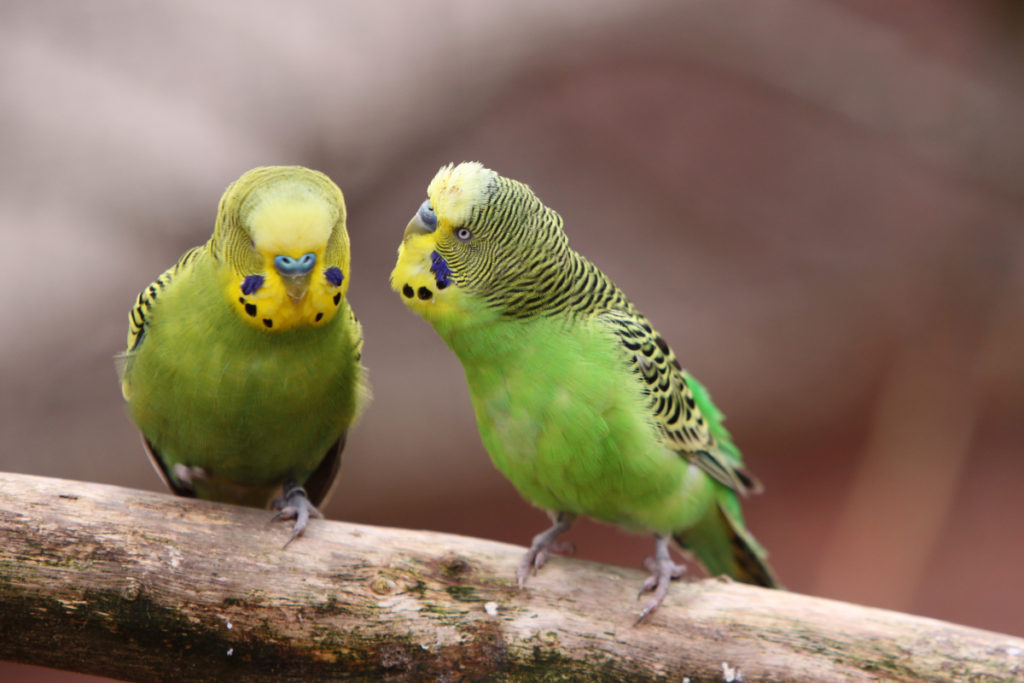
The Budgerigar(Melopsittacus undulatus) also known as Budgie, Common Parakeet, Warbling Grass Parakeet, Canary Parrot, Zebra Parrot, Scallop Parrot, or Shell Parakeet is a small parrot classified in the order Psittaciformes, and the family Psittaculidae.
Physical Characteristics
Wild adult Budgerigars’ throats and faces are yellow; there are black spots and iridescent blue-violet cheek patches on each side of their throats. The body is mostly green, but there are black bars on the back of the head and the back. The tail is blue. An adult male’s cere is typically blue and a female’s cere is typically brown.
Wild immature Budgerigars have more black bars on their heads and there are less spots on their throats or none at all. Immature individuals are also typically duller in color. The cere of an immature individual is usually pinkish.
Captive Budgerigars can produce unique colorations. some rare color varieties produce adult males with pink ceres; this can make telling an immature from an adult male difficult.
| Genus | Melopsittacus |
| species | M. undulatus |
| Binomial Name | Melopsittacus undulatus |
| Length | 17-20 cm(6.7”-7.9”) |
| Wingspan | About 30 cm(11.8”) |
| Weight | 20-40 gm(0.7-1.40 oz) |
| Diet | Herbivore |
| IUCN Status | Least Concern |
Range and Habitat
Budgerigars live in Australia where they inhabit riverine woodlands, grasslands, scrublands, and farmlands.
Breeding
Budgerigars nest in a cavity of a tree, stump, fence post, or a fallen branch. The female lays a clutch of 4 to 8 eggs which are incubated for 18 to 21 days. The eggs are 1.9 x 1.3 centimeters(0.7480 x 0.5512 inches).
Diet
Budgerigars eat seeds.

Fun Facts
- Budgerigars can mimic human speech; however it is typically only male specimens that can learn to “talk”.
- Budgerigars can live for up to 29 years.
- The Budgerigar has been printed on some Australian postage stamps.
